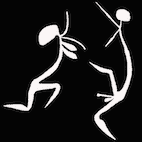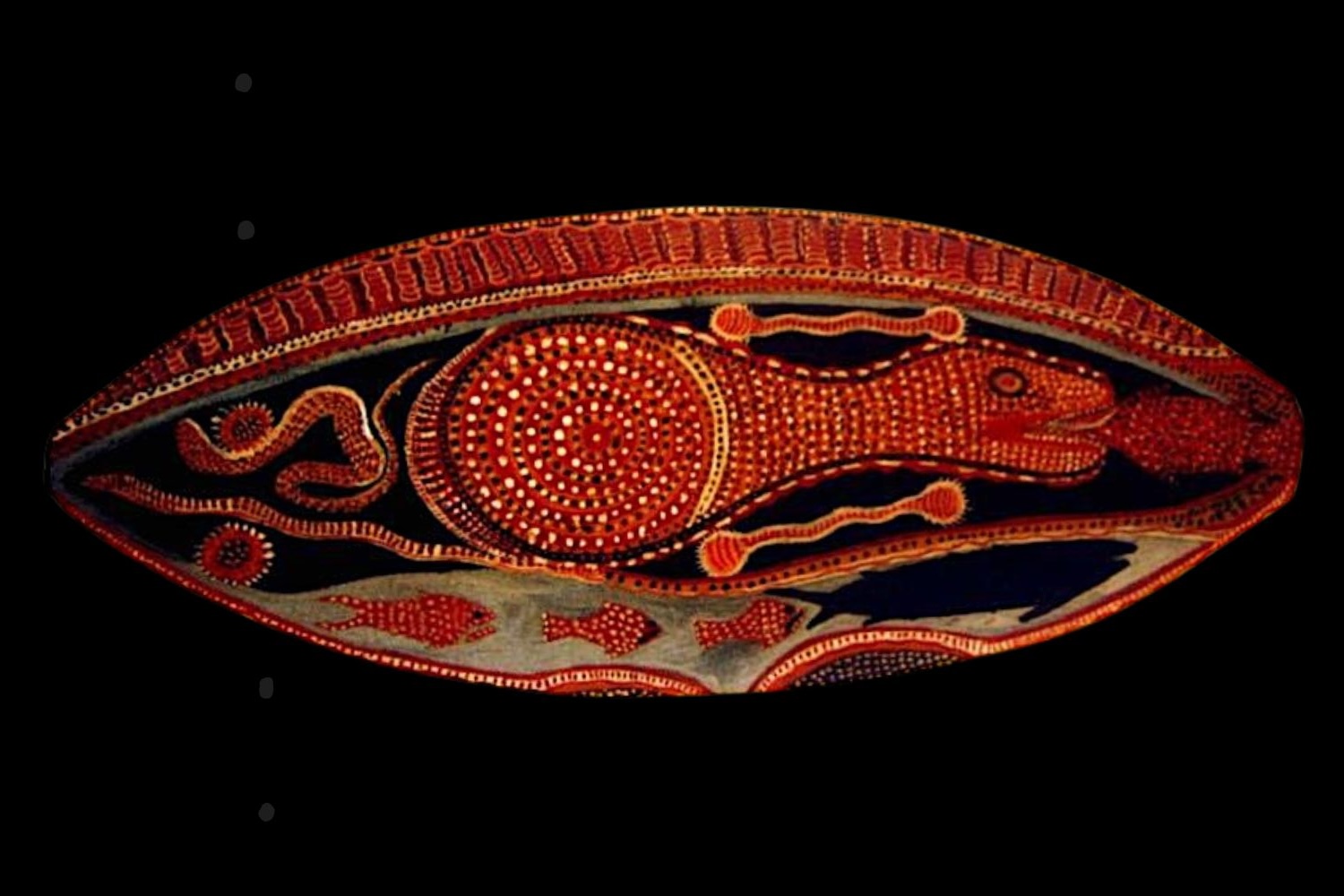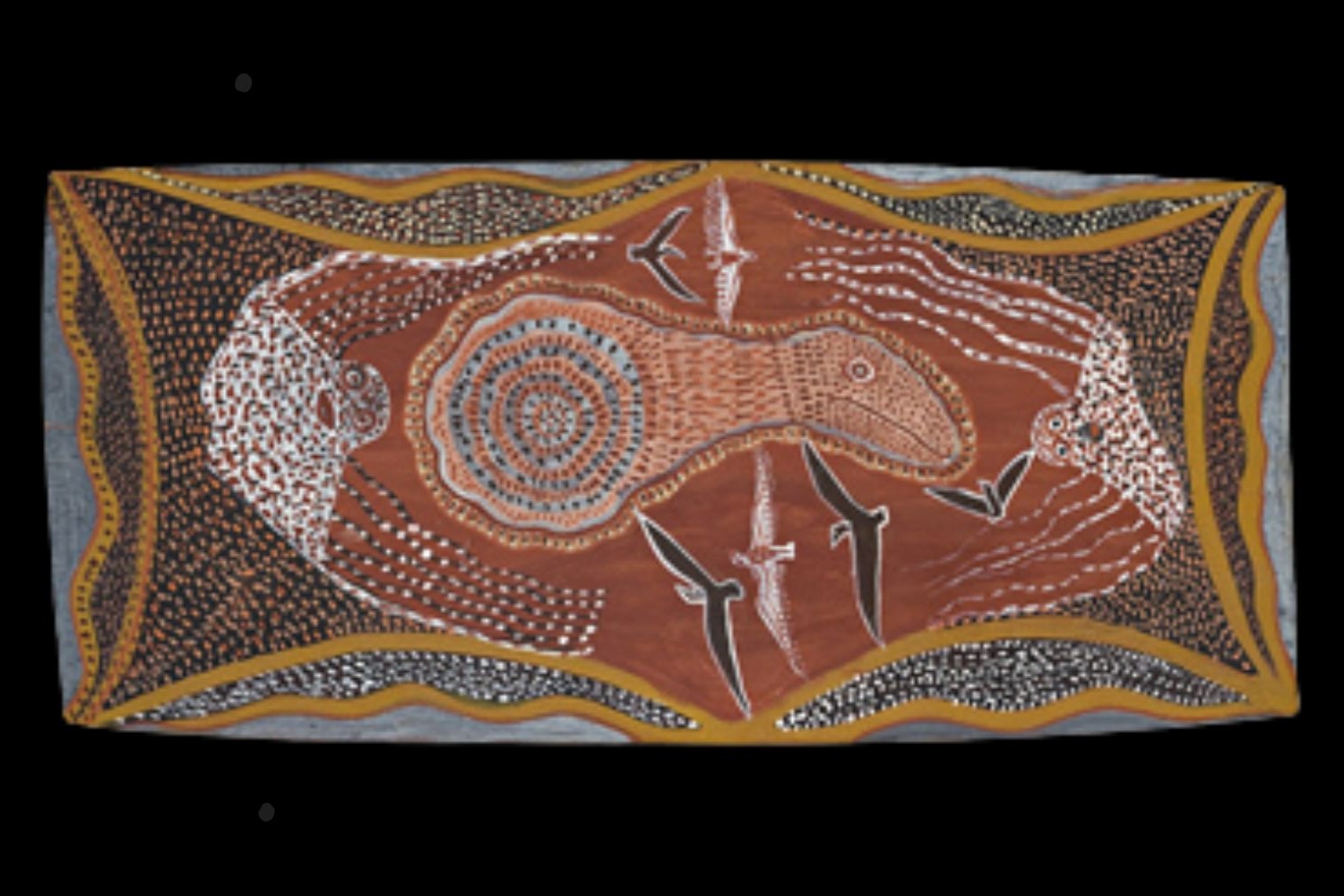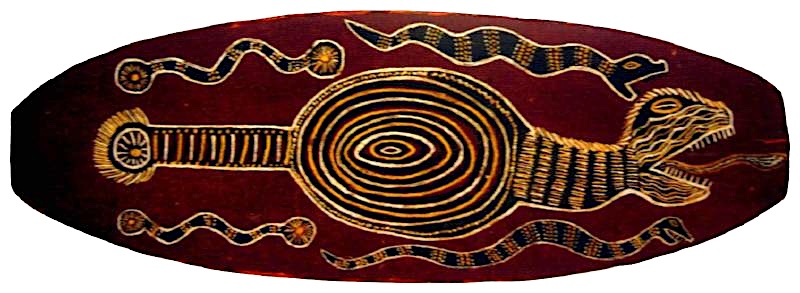Bobyin Nongah
Wadeye bark painter | Kunmanggur Dreaming | Rainbow Serpent iconography
Aboriginal artist Bobyin Nongah was an early bark painter from Port Keats (Wadeye) whose work focused on the Rainbow Serpent
Bobyin Nongah was an Aboriginal artist active in the Wadeye (formerly Port Keats) region during the 1960s and 1970s. His bark paintings are rare and culturally significant, especially for their singular focus on Kunmanggur, the Rainbow Serpent—one of the most powerful and revered ancestral beings in Aboriginal cosmology.
If you have a bark painting by Bobyin Nongah, I would love to see it. Please send me an image. I am actively collecting bark paintings by artists from Port Keats and offer free valuations and expert authentication, even if you’re not selling.
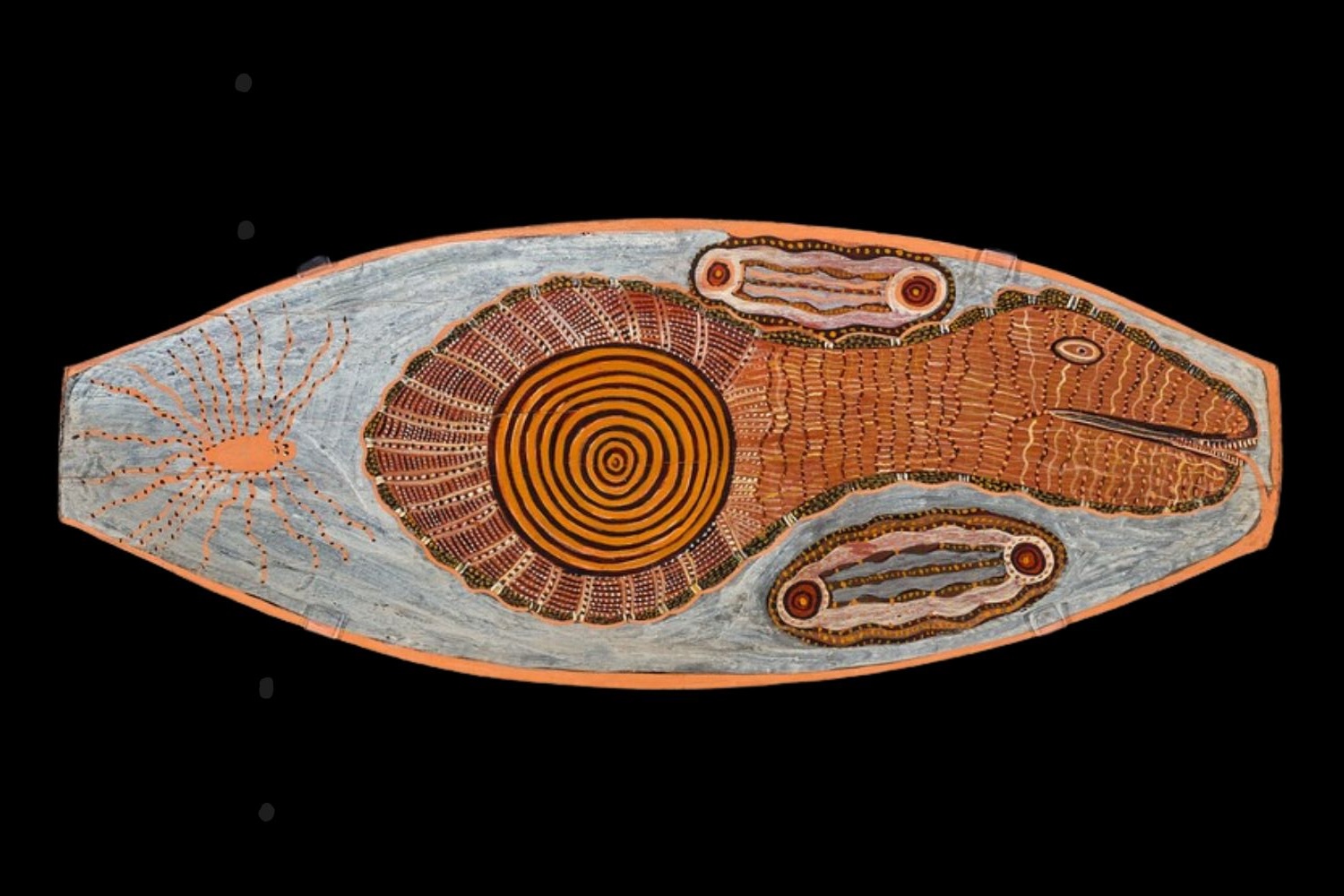
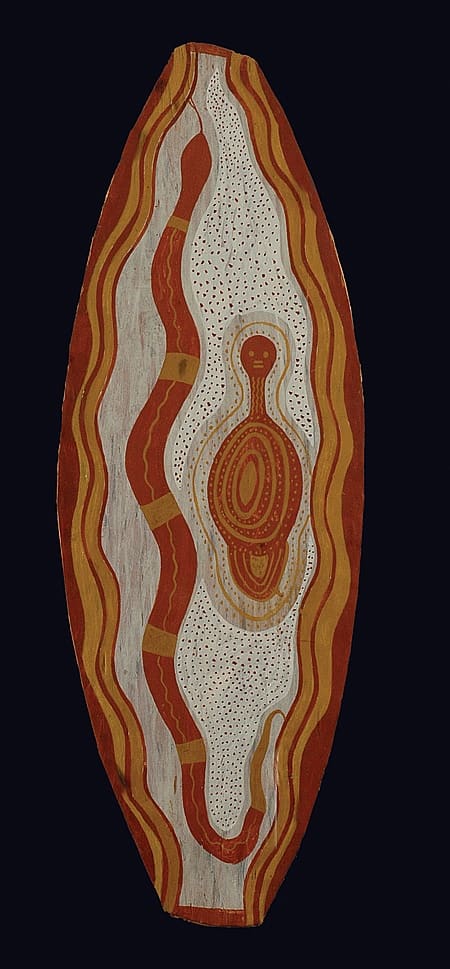
Biography of Bobyin Nongah
Sadly, little is known about the life of Bobyin Nongah. Like many artists from Wadeye, his name and works were rarely documented by collectors, anthropologists, or mission records at the time. However, his paintings—marked by strong ceremonial symbolism and a focused visual language—suggest a senior figure in local ritual life.
It is likely that Nongah spoke Murrinhpatha (sometimes spelled Murinbata), the dominant language group in Wadeye, and belonged to a clan responsible for the Kunmanggur Dreaming. This ancestral being, also known as the Rainbow Serpent, is associated with waterholes, creation, fertility, and the great underground serpents that shaped the landscape.
Artists like Bobyin Nongah were not simply painters; they were custodians of sacred knowledge, and their works often served ceremonial or educational purposes within the community.
If you have more information about this artist or others from the Port Keats region—such as Nym Bunduk, Charlie Mardigan, Indji Tharwul, or Charlie Brinken—please get in touch. Preserving this history is vital to understanding the full story of Aboriginal bark painting in the Top End.
Bobyin Nongah’s Bark Painting Style
Kunmanggur: The Rainbow Serpent Dreaming
Nearly all known bark paintings by Bobyin Nongah feature the Rainbow Serpent—depicted through an elegant, minimalistic style that blends symbolism and abstraction. His signature motif is a set of concentric circles that morph into the serpent’s head, creating a visual fusion of waterhole and ancestral being.
In Aboriginal visual language, the concentric circle is a sacred symbol representing a waterhole or ceremonial site. In Nongah’s work, the circle becomes more than a location—it embodies Kunmanggur itself, the place and the spirit being one and the same.
These designs strongly echo iconography seen in Central Desert art, where the circle motif is also used for waterholes and sites of spiritual emergence. This similarity is not coincidental: many clans in Port Keats trace ancestral connections to inland desert regions, having migrated toward the coast over centuries. These links are preserved not only in story and language but also in shared visual structures within the art.
Stylistic Characteristics
- Medium: Natural ochres on stringybark
- Format: Typically rectangular barks with rounded corners
- Motif: Central waterhole (concentric circles) transforming into a serpent head
- Colour palette: Earthy reds, whites, and blacks, sometimes with yellow
- Tone: Symbolic, minimal, and highly ceremonial
Bobyin Nongah’s style is restrained but deeply symbolic. His work stands apart for its discipline and thematic unity, reflecting a profound commitment to a singular ancestral narrative.

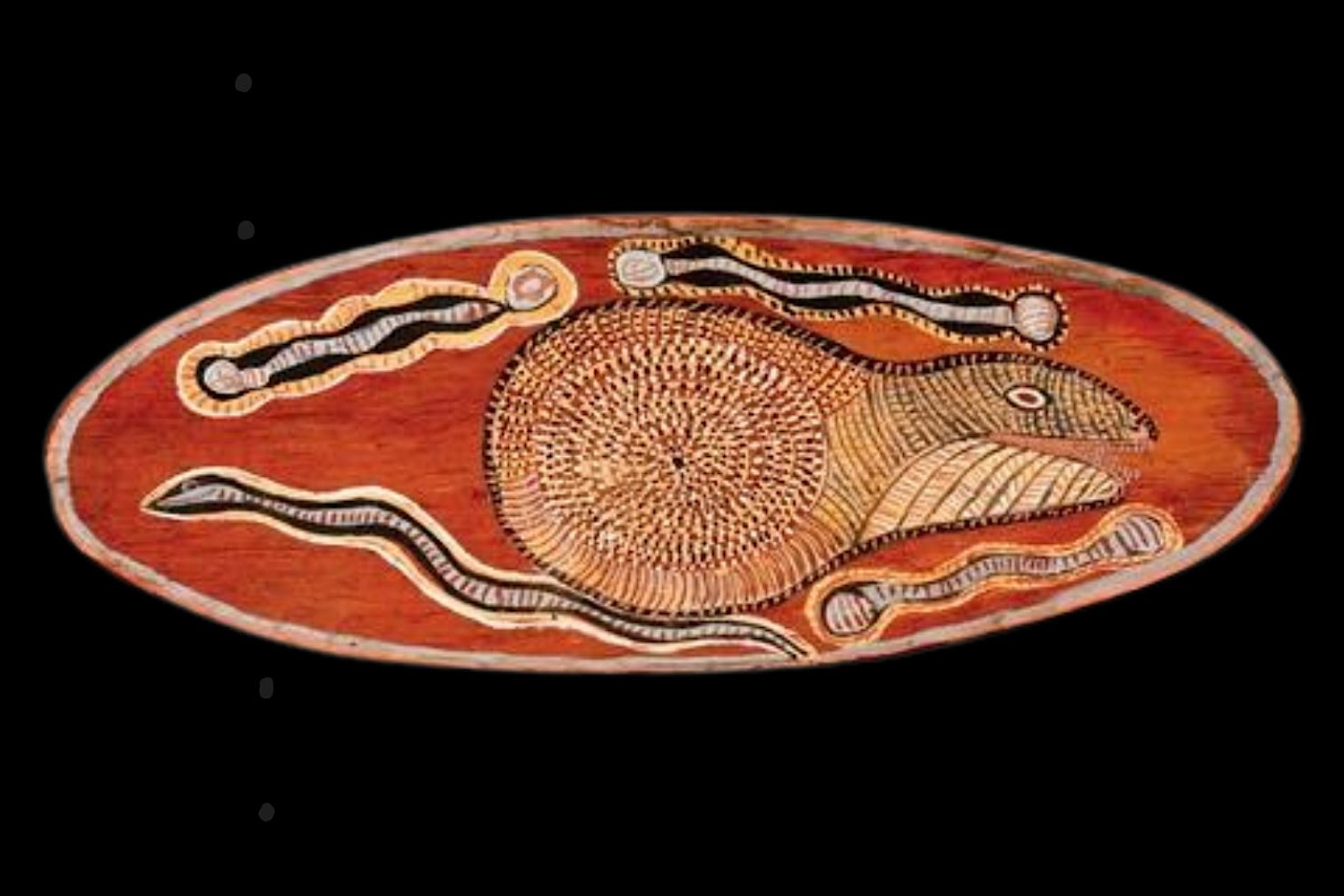
The Importance and Rarity of Bobyin Nongah’s Work
Bark paintings from Wadeye remain among the most under-recognised in the history of Aboriginal art. While Arnhem Land and Papunya artists have received widespread acclaim, early painters from Port Keats—like Bobyin Nongah—are rarely mentioned in major exhibitions or institutional collections.
This is not due to lack of merit. In fact, paintings like those by Nongah are among the earliest visual expressions of Rainbow Serpent cosmology in bark form outside of Central Arnhem Land. Their cultural depth, graphic simplicity, and mythic focus make them highly desirable to collectors and scholars interested in the roots of Aboriginal symbolic abstraction.
Unfortunately, very few works by Bobyin Nongah have survived. For this reason, any verified bark painting by Nongah although not extremely valuable is both a cultural treasure and a rare collector’s item.
Do You Own a Bark Painting by Bobyin Nongah?
If you believe you have a painting by Bobyin Nongah, I would be thrilled to see it. Please send me a photo, and I’ll help you identify, value, and authenticate the piece. I am actively buying bark paintings from Port Keats artists and am also happy to provide free advice to collectors, families, or institutions.
By sharing your artwork or stories, you help restore the legacy of a little-known but important figure in the history of Aboriginal bark painting in the Northern Territory.
Further reading
All images in this article are for educational purposes only.
This site may contain copyrighted material the use of which was not specified by the copyright owner.
Bobyin Nongah artwork Images
The following images are of the Artwork of Bobyin nongah. It is likely not a complete list of his works. They do however give a good idea of the style and above all the variety of this Aboriginal Artist.
